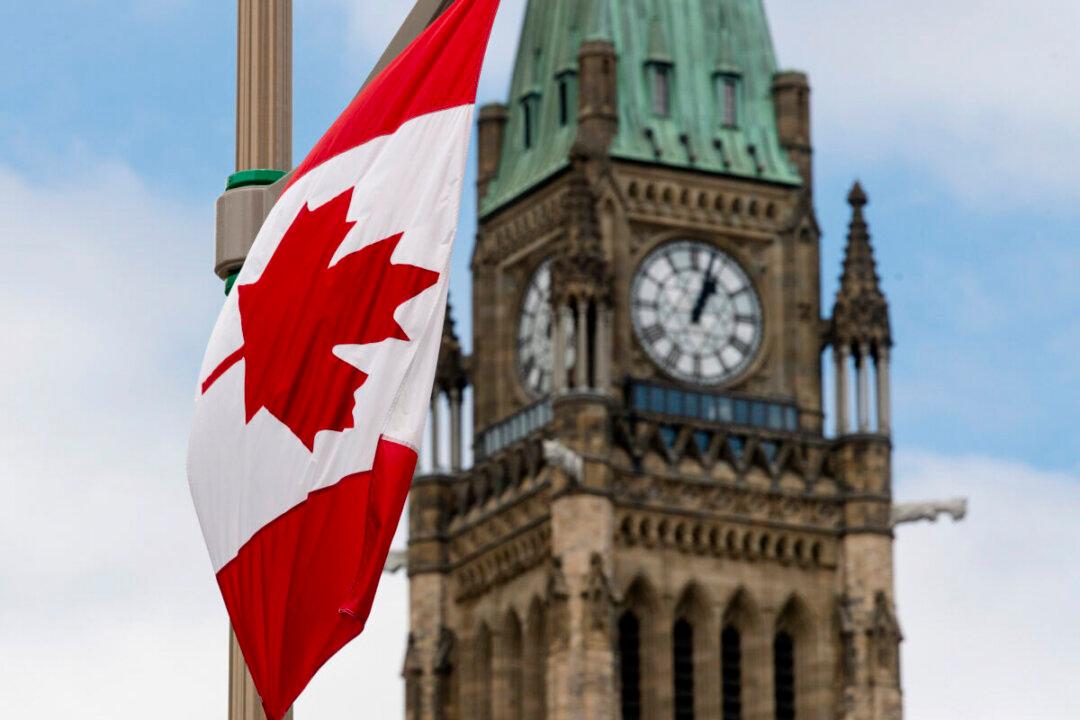Things may get heated in the House of Commons sometimes, but the weapon of choice has been words—most of the time. The most recent fracas in the House occurred last week when Conservative Leader Pierre Poilievre called NDP Leader Jagmeet Singh a “sellout,” and Singh reportedly left his seat to yell at Poilievre.
Singh ended his supply-and-confidence agreement with the Liberal government at the beginning of September. Poilievre called him a “fake, a phony, and a fraud” during question period on Sept. 19 for not voting against the government in the non-confidence motion he was tabling. Since the questions are to be answered by the government in these sessions, Singh didn’t have an opportunity to respond to Poilievre’s accusations.
Instead, Singh walked out into the aisle to yell at Poilievre, according to reporters present in the viewing gallery.
None of the altercation was caught on camera, and House Speaker Greg Fergus muted the audio so Singh’s words were not caught on tape, but witnesses said he shouted “I’m right here, bro.”
During the muted part of the feed, Poilievre could be seen pointing in Singh’s direction briefly before nodding and speaking with a slight smile. He appeared to be saying “do it.” The incident did not come to blows.
House Speaker Greg Fergus subsequently asked parliamentarians to watch their speech and conduct.
“There were words which fall outside of what’s acceptable,” Fergus said before question period began Sept. 23. “There was behaviour which was also outside of the parliamentary traditions.”
Fergus later penalized Poilievre for not withdrawing his comments by docking three question opportunities on Sept. 26. Fergus said Singh did agree to “act differently in the future” when Fergus reached out to him.

Altercations in the House
While no fist fights have ever broken out in the House of Commons, the proceedings have gotten physical on several occasions.Prime Minister Justin Trudeau was involved in one such incident in 2016 when video footage showed him striding across the floor to grab the arm of a Conservative MP and lead him away from a group of other legislators, with Trudeau later saying it was because they were holding up House proceedings. While doing so, he reportedly elbowed a female New Democrat MP in the chest.
The prime minister then proceeded to get into a shouting match with then-NDP Leader Tom Mulcair. At that point, several members of Trudeau’s Liberal cabinet left their seats to gather around the prime minister before order was restored.
Trudeau later apologized saying that, in hindsight, it was “an unadvisable course of action and resulted in physical contact in this house that we can all accept was unacceptable.”
Four years prior, in 2012, Conservative Peter Van Loan crossed the floor to wave his finger in New Democrat MP Nathan Cullen’s face while cursing at him. Mulcair and other NDP members came to Cullen’s defence and Mulcair reportedly cursed back at Van Loan. The heated exchange ended before it could get physical when then Defence Minister Peter MacKay rushed over to usher Van Loan back across the aisle.
Cannis didn’t take the bait.
A decade earlier, Conservative MP Dan McKenzie became known as “Fighting Dan” after shoving Liberal John Nunziata during a late-night debate about a back-to-work bill for postal workers. A 1987 Canadian Press article said Nunziata accused McKenzie of being “seriously impaired by alcohol” during the incident. McKenzie later denied the accusation, but apologized for getting physical.
UK Antics
Things have sometimes gotten more violent in the mother parliament, compared to Canada’s relatively younger Parliament.During a 1938 debate in the UK House of Commons about the Spanish Civil War, Conservative MP Robert Bower told Jewish Labour MP Emanuel Shinwell to “go back to Poland.” Shinwell crossed the floor and hit Bower in the face before apologizing to the Speaker and walking out of the chamber.A dispute over army conduct on Bloody Sunday in Northern Ireland in 1972 led Independent Socialist MP Bernadette Devlin to punch Conservative Party Home Secretary Reginald Maudling after he said the soldiers fired at the protesters in self-defence. Devlin said she was an eyewitness and lost her temper when she felt she was being denied the right to speak. She was banned from the House of Commons for six months.
US Violence
Violence in the United States House of Representatives dates as far back as 1798 when Federalist Congressman Roger Griswold of Connecticut attacked Democratic-Republican Party Representative Matthew Lyon of Vermont with a hickory walking stick. After the pair were separated, Lyon retaliated by grabbing a pair of metal fireplace tongs and the brawl resumed.In the following century, John Wilson, the speaker of the Arkansas House of Representatives, stabbed Representative J. J. Anthony to death during an 1837 legislative dispute on the floor of the chamber.
That was followed by a brawl involving approximately 50 representatives on the House floor in 1858 when Congressman Laurence M. Keitt of South Carolina threatened to choke Pennsylvania Congressman Galusha A. Grow and lunged for his throat.
Tempers continue to flare in more recent times, although the altercations have become less violent.
Democrat Thomas Downey of New York confronted California Republican Robert Dornan on the House of Representatives chamber floor in 1985 over a speech Dornan had given two days prior. Dornan claimed Downey grabbed him by the shoulder and turned him around to ask if he had called him a wimp during the speech. Dornan replied, “I did, and you are.” Downey said Dornan then grabbed him by the tie and collar and threatened him with “bodily harm.”
International Incidents
Things have descended into more dramatic fights in other parts of the world.At times, brawls have broken out in the legislatures of Taiwan and Pakistan. Peru’s legislature has also seen several fistfights and, in one incident, congressmen pelted a colleague with coins.
South Korea’s National Assembly is also known for periodic fist fights, but one of the most unusual incidents occurred in 1966 when a legislator threw feces on cabinet members. His membership was revoked and he was sent to jail.








